Pollinators are popular. That however hasn’t protected them from multiple challenges, and it’s a source of comfort that bodies such as Aberdeenshire Council go out of their way to help these important insects. Amongst the first councils in Scotland to launch a Pollinator Action Plan, they are now onto their third such plan. And the good news is they are making a difference.
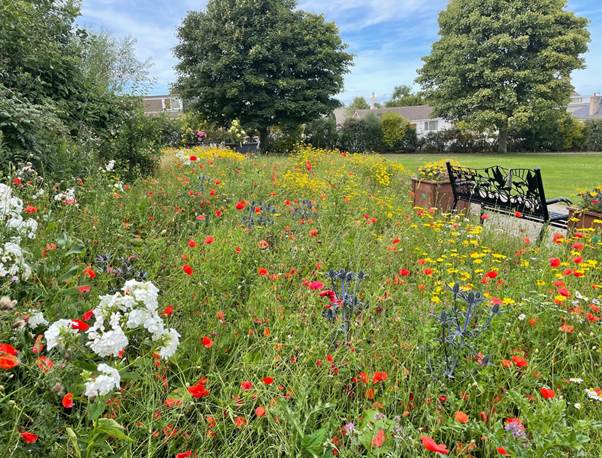
It was back in 2015 that Aberdeenshire got its first Action Plan, almost a decade on the latest iteration adds more measurable, time limited actions to the impressive suite of tools.
There is no doubt we operate in challenging times when it comes to helping nature. As if changes in land use, fragmentation of habitats, pesticides and disease were not enough of a catalogue of issues, we are increasingly looking with concern to climate change. Rather alarmingly figures released recently showed that some parts of the UK endured their wettest 18-month spell since records were first compiled back in 1836. Four of the top ten wettest winters have now occurred in the last decade.
Such conditions aren’t easy for pollinators. And that is a problem for us, as pollinators are key to supporting healthy landscapes and habitats.
In Aberdeenshire the Council’s Ranger Service, Greenspace Officers, Natural Environment Team and Community Groups have all looked to see what they can do to help pollinators in the immediate future. That typically means addressing concerns around a good supply of nectar and pollen, looking to achieve habitat connectivity, and planting with an eye to pollinator needs throughout the changing seasons and insect life-cycles.
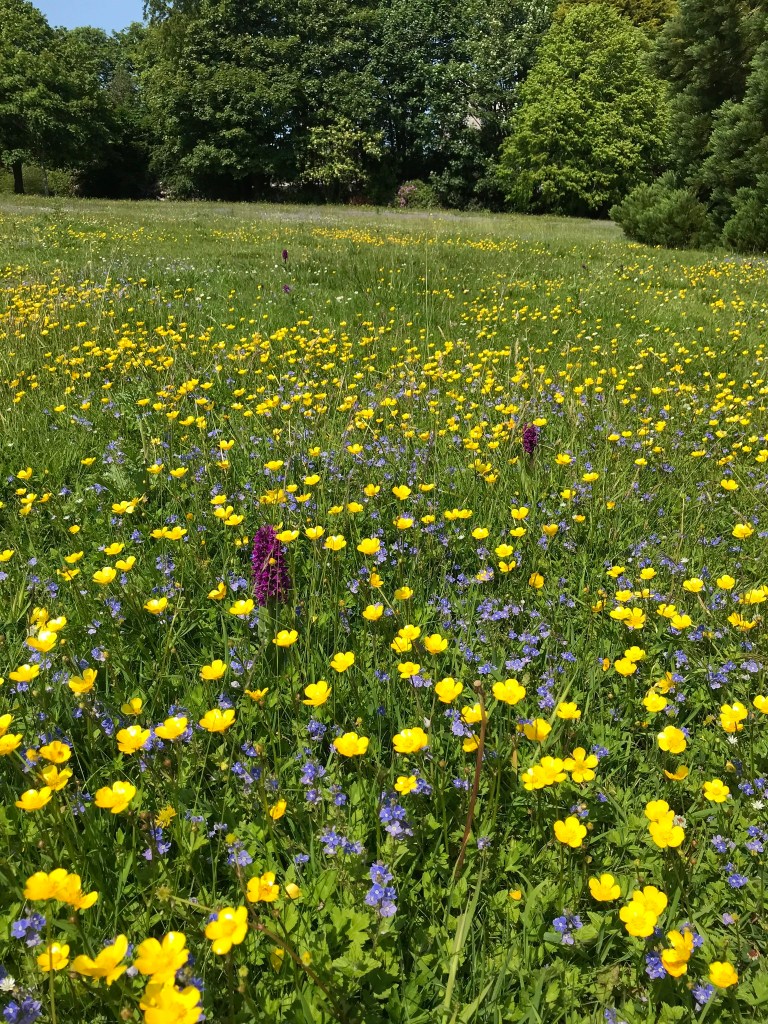
So, what have they been up to in Aberdeenshire? How do things look on the ground?
One particularly pleasing measure is that at least 80 school grounds are earmarked to be pollinator-friendly by 2027. Encouraging the next generation to appreciate and help nature is time well-invested. The creation of a Biodiversity Education Pack for schools is a logical way to bolster this work. In both practice and theory, the school environment is increasingly geared towards helping pollinating insects. An extremely popular and successful B-Lines project creating pollinator habitat with schools in the north of Aberdeenshire further shows their desire to engage, practically and has worked with 12 schools to date.
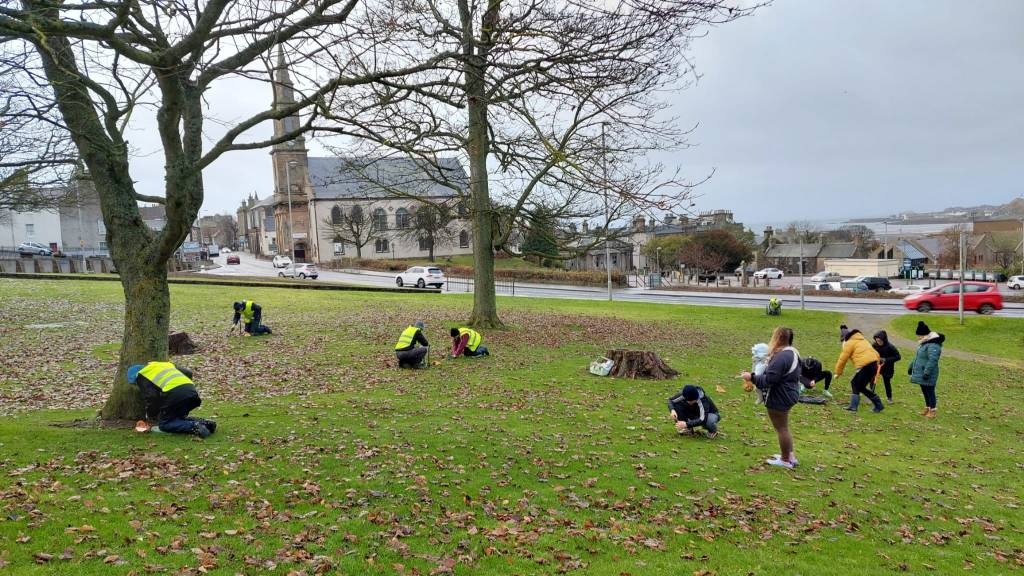
Simultaneously, perennial plant promotion (as opposed to reliance on annuals) is gaining traction with the Greenspace Project initiative ‘Perennials for Pollinators’, running for its third year in 2024. This initiative supports the gradual shift away from the endless cycle of replacing annual bedding plants in community planting schemes to something with practical value rather than short-term narrow aesthetic appeal. It’s likely that increasingly natural regeneration will come to supplement this approach. With the growing enthusiasm amongst communities, the Council nursery facility is also being considered in its potential for perennial plant production in years to come.
At least 10% of council manged public greenspace in Aberdeenshire will be managed specifically for pollinators and biodiversity by 2027. The council is exploring habitat creation at woodland sites they own, with a shift to native tree species (hastened by significant storm damage and woodland loss in 2021/22), and shrub planting in open rides and around woodland edges an emerging preference. And in a welcome, and highly-visible move, wildflower areas are steadily becoming more prevalent in parks and recreation grounds, active travel routes, road verges, and school grounds.
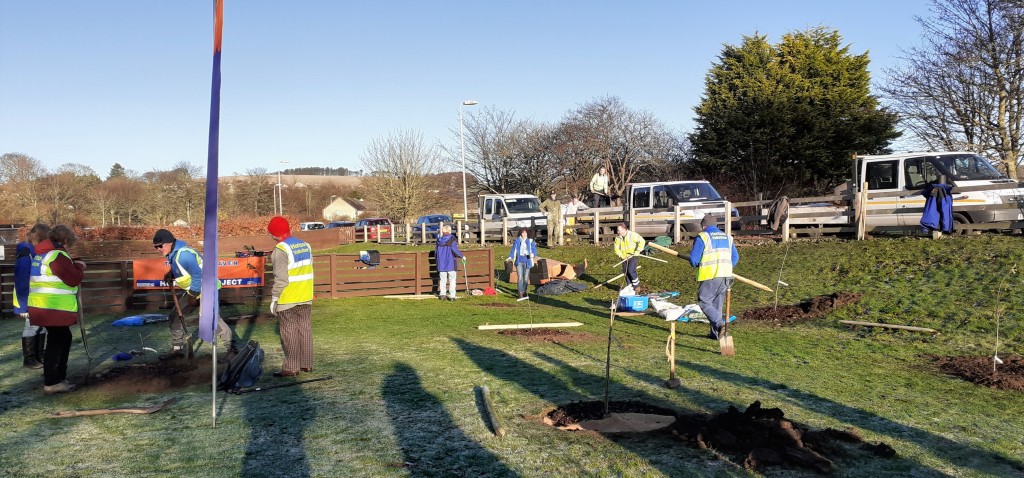
Many have been created with the support and help of people power, highlighting the enormous social value of these biodiversity projects. Allowing grass to flower longer was trialled in 2023 with No-Mow May and Let it Bloom June being introduced at several sites across the Shire. A massive bulb planting effort, facililated by the Greenspace Project, saw over 300,000 flowering bulbs planted by over 100 community groups across the region. This will not only provide a source of nectar in the bulb flowers, but also allows the grass to flower for longer.
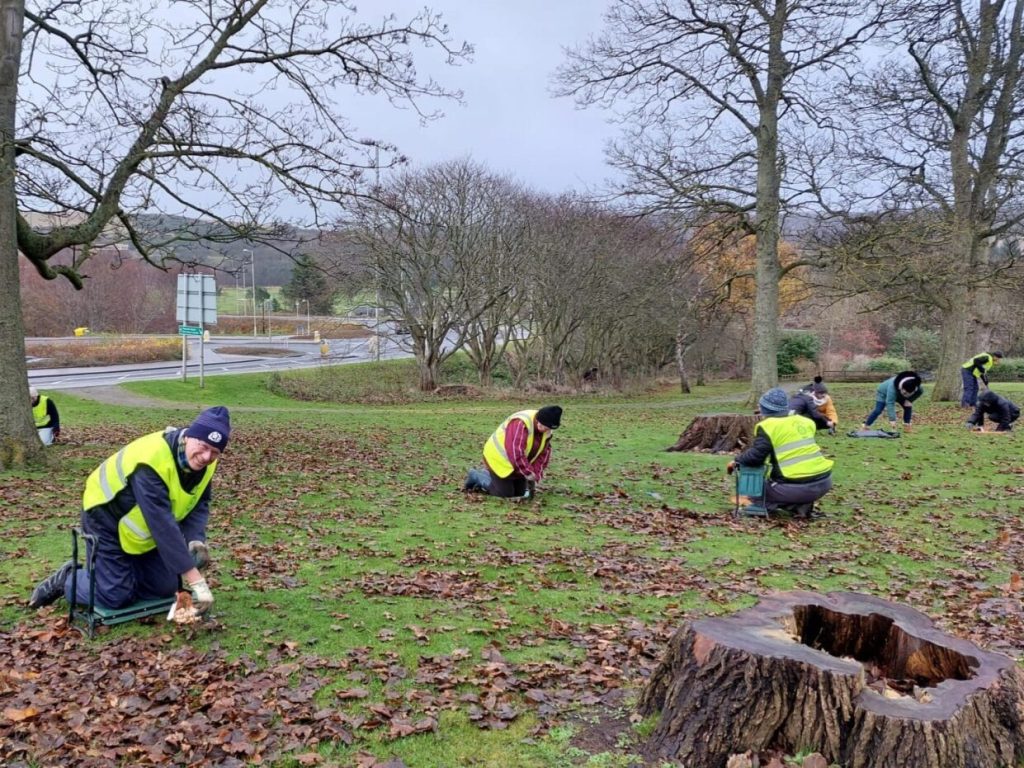
Whilst the council pursues its agenda to help pollinators, it also enthusiastically embraces partnership working. They seek allies in neighbouring local authorities and the busy North East Scotland Biodiversity Partnership. Support also comes from NESBReC training courses which often focus on volunteer recording of pollinating insects and habitat surveys. There is also a supportive collaboration with Buglife Scotland in exploring opportunities for a B-Line project next to the River Don.
Pollinators generally enjoy a high profile within the public perception. There is broad awareness of the threats they face but messages need to be periodically reinforced. In Aberdeenshire that takes many shapes, one of the most visible being the 150 or so Ranger Service sessions run each year with local schools, nature groups and communities to raise awareness of pollinators. There is also an online training course, “Mowing for Biodiversity” created by the Ranger Service. The course highlights the importance of pollinators to Council staff and elected members and shares information on what actions can improve habitats for pollinators.
The new plan is evolving to build on success. Habitat creation and management, the creation of green networks and corridors, and raising the profile of the plight facing our pollinators are all positive actions which are retained. The willingness to review and modify actions to help pollinators is a sign of not being prepared to rest on their laurels. It’s that observe and learn method which is a key strength of the Aberdeenshire approach.
Find out more:
Aberdeenshire Council Pollinator Action Plan 2022 to 2027
NESBReC Biological records for the North East of Scotland











